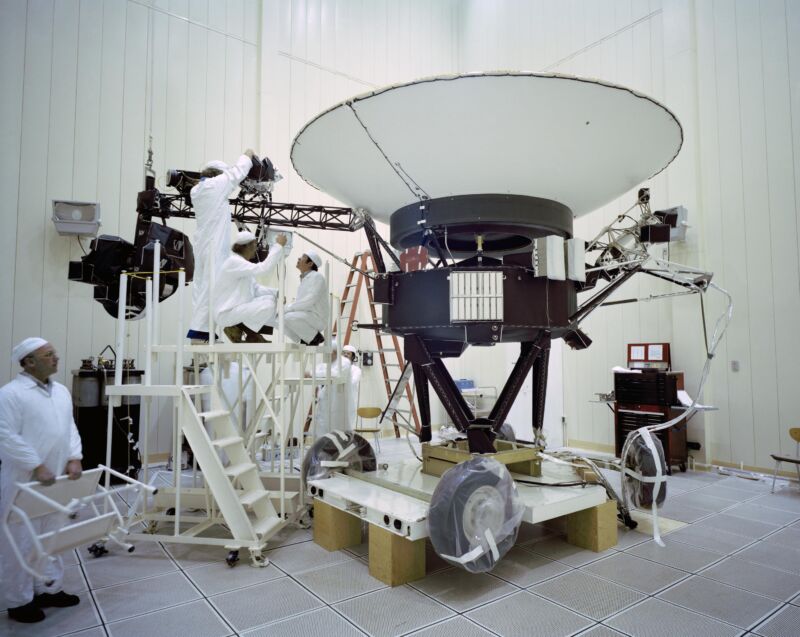
Forty-six years in deep space have taken their toll on NASA’s twin Voyager spacecraft. Their antiquated computers sometimes do puzzling things, their thrusters are wearing out, and their fuel lines are becoming clogged. Around half of their science instruments no longer return data, and their power levels are declining.
Still, the lean team of engineers and scientists working on the Voyager program at NASA’s Jet Propulsion Laboratory are taking steps to eke out every bit of life from the only two spacecraft flying in interstellar space, the vast volume of dilute gas outside the influence of the Sun’s solar wind.
“These are measures that we’re trying to take to extend the life of the mission,” said Suzanne Dodd, Voyager project manager at JPL, in an interview with Ars.
Voyager’s instruments are studying cosmic ways, the magnetic field, and the plasma environment in interstellar space. They’re not taking pictures anymore. Both probes have traveled beyond the heliopause, where the flow of particles emanating from the Sun runs into the interstellar medium.
“These two spacecraft are still operating, still returning uniquely valuable science data, and every extra day we get data back is a blessing,” Dodd said.
But spacecraft engineers love redundancy, but they no longer have the luxury of backups on the Voyagers. That means, in any particular section of the spacecraft, a failure of a single part could bring the mission to a halt.
“Everything on both spacecraft is single-string,” Dodd said. “There are not any backup capabilities left. In some cases, we powered off stuff to save power, just to keep the instruments on.”
Problem-solving from more than 12 billion miles away
Over the weekend, ground controllers at JPL planned to uplink a software patch to Voyager 2. It’s a test before the ground team sends the same patch to Voyager 1 to resolve a problem with one of its onboard computers. This problem first cropped up in 2022, when engineers noticed the computer responsible for orienting the Voyager 1 spacecraft was sending down garbled status reports despite otherwise operating normally. It turns out the computer somehow entered an incorrect mode, according to NASA.
Managers wanted to try out the patch on Voyager 2 before transmitting it to Voyager 1, which is flying farther from Earth, deeper into interstellar space. That makes observations of the environment around Voyager 1 more valuable to scientists.
At the same time, engineers have devised a new to operate the thrusters on both Voyager spacecraft. These small rocket engines—fired autonomously—are necessary to keep the main antenna on each probe pointed at Earth. There’s a buildup of propellant residue in the narrow lines that feed hydrazine fuel to the thrusters. NASA says the buildup is “becoming significant” in some of the lines, so engineers beamed up fresh commands to the spacecraft in the last few weeks to allow the probes to rotate slightly further in each direction before firing the thrusters.
This will result in the spacecraft performing fewer, longer firings, each of which adds to the residue in the fuel lines. The downside of this change is that science data transmitted back to Earth could occasionally be lost, but over time, the ground team concluded the plan would allow the Voyagers to return more data over time, NASA said.
With these steps, engineers expect the propellant inlet tubes won’t become completely blocked for at least five more years, and “possibly much longer,” NASA said. There are other things engineers could try to further extend the lifetime of the thrusters.
“This far into the mission, the engineering team is being faced with a lot of challenges for which we just don’t have a playbook,” said Linda Spilker, Voyager project scientist at JPL, in a statement. “But they continue to come up with creative solutions.”
https://arstechnica.com/?p=1977686

